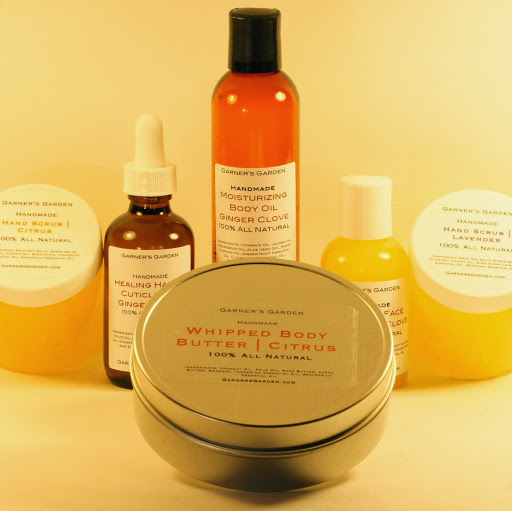Philip Paul Garner
age ~70
from Moscow, ID
- Also known as:
-
- Philip P Garner
- Philip T Garner
- Phillip P Garner
- Philip Paul
- Phone and address:
-
1069 Nearing Rd, Moscow, ID 83843
2164963400
Philip Garner Phones & Addresses
- 1069 Nearing Rd, Moscow, ID 83843 • 2164963400
- 19101 Van Aken Blvd, Beachwood, OH 44122 • 2169911906
- Cleveland Heights, OH
- 19101 Van Aken Blvd APT 423, Shaker Heights, OH 44122 • 2169911906
Resumes

Manager
view sourceWork:
Manager

Philip Garner
view sourceUs Patents
-
Helical Nucleopeptides
view source -
US Patent:7183394, Feb 27, 2007
-
Filed:Aug 11, 2000
-
Appl. No.:10/110017
-
Inventors:Philip P. Garner - Cleveland Heights OH, US
-
International Classification:C07H 21/02
C07H 21/04
C07H 21/00
C12Q 1/68 -
US Classification:536 231, 536 243, 536 253, 435 6
-
Abstract:The present invention relates to peptide-based nucleic acid surrogates (PNAs) having a repeating structure of (AA-aa)and a particular secondary structure that can bind to particular single-stranded nucleic acid targets. Preferably the peptide-based nucleic acid surrogate has an alpha-helical secondary structure (αPNA). Also, the present invention relates to the method of forming peptide-based nucleic acid surrogates having a particular secondary structure. The nucleic acid surrogates may be utilized for therapeutic (antisense, antigene), diagnostic (genetic), and molecular switching (αPNA chips) applications.
-
Aziridine Mediated Native Chemical Ligation
view source -
US Patent:20130131311, May 23, 2013
-
Filed:Nov 13, 2012
-
Appl. No.:13/675524
-
Inventors:Washington State University - Pullman WA, US
Philip Garner - Pullman WA, US -
Assignee:WASHINGTON STATE UNIVERSITY - Pullman WA
-
International Classification:C07K 1/00
C07K 7/64
C07K 5/083
C07K 5/062
C07K 7/06
C07K 5/103
C07K 14/00
C07K 9/00 -
US Classification:530321, 530326, 536 179, 558173, 558145, 530329, 530330, 530331, 564153
-
Abstract:Improved methods of native chemical ligation are provided. The methods involve reacting a thioacid (e.g. a peptide thioacid) with an aziridinyl compound (e.g. an aziridinyl peptide) under mild conditions without the use of protecting groups, and without requiring that a cysteine residue be present in the ligation product. Initial coupling of the thioacid and the aziridinyl compound yields a ligation product which contains an aziridinyl ring. Subsequent opening of the aziridinyl ring (e.g. via a nucleophilic attack) produces a linearized and modified ligation product.
-
Peptide Based Nucleic Acid Surrogates
view source -
US Patent:57314160, Mar 24, 1998
-
Filed:May 14, 1996
-
Appl. No.:8/645930
-
Inventors:Philip P. Garner - Cleveland Heights OH
-
Assignee:Case Western Reserve University - Cleveland OH
-
International Classification:C07K 200
A61K 3802 -
US Classification:530350
-
Abstract:The present invention relates to the development of a new class of oligonucleotide surrogates capable of sequence specific binding to simple stranded DNA and RNA as well as to double stranded DNA targets. More specifically, structures (Ser/Thr�CH. sub. 2 B!-AA). sub. n represent the repeating structural units for a number of the nucleic acid surrogates of the present invention. Once synthesized (in suitably protected form), the monobasic units are linked together via peptide bonds to produce the required oligomeric structures having defined nucleobase sequences. These nucleic acid surrogates may then be utilized for use as antisense/antigene probes and/or drug carriers.
-
Versatile Native Chemical Ligation Technologies
view source -
US Patent:20140213758, Jul 31, 2014
-
Filed:Mar 14, 2014
-
Appl. No.:14/211176
-
Inventors:- Pullman WA, US
Philip Garner - Pullman WA, US -
Assignee:Washington State University - Pullman WA
-
International Classification:C07K 1/107
C07H 13/00 -
US Classification:530322, 536 291
-
Abstract:Novel methods of native chemical ligation are provided. The methods involve reacting a thioacid (e.g. a peptide thioacid) with an aziridinyl compound (e.g. an aziridinyl peptide) or glycosylamine under mild conditions without the use of protecting groups, and without requiring that a cysteine residue be present in the ligation product. Initial coupling of the thioacid and the aziridinyl compound yields a ligation product containing an aziridinyl ring. Optional subsequent opening of the aziridinyl ring (e.g. via a nucleophilic attack) produces a linearized and modified ligation product. Coupling of a peptide thioacid and glycosylamine yields a glycosylated peptide.
Isbn (Books And Publications)



Inclusive Education: Special Paperback Edition of the World Book of Education
view sourceAuthor
Philip Garner
ISBN #
0749434546



Name / Title
Company / Classification
Phones & Addresses
Marquee Custom Homebuilders, LLC
REAL/PERSONAL PROPERTY
REAL/PERSONAL PROPERTY
Wikipedia

Phillip Garner
view sourcePhillip John Garner (born 26 March 1946 2 September 2009) was an English cricketer. Garner was a right-handed batsman who bowled right-arm off break.
Myspace
Plaxo

Philip Garner
view sourceKeller Williams Realty
Googleplus

Philip Garner
Work:
Hero Create Marketing - Reputation Architect (2010)
Education:
Hampton University - Marketing

Philip Garner
Education:
University of Oxford - Master of Mathematics
Tagline:
Student, Ultimate player

Philip Garner
Work:
Axis Education - Big Cheese

Philip Garner

Philip Garner

Philip Garner

Philip Garner

Philip Garner
Education:
Georgia College & State University - Marketing
Relationship:
Married
About:
Cynthia is my wonderful wife. We live in Atlanta, Georgia. I am an advertising sales and marketing professional. I earned a Bachelors of Business Administration degree at Georgia College & State U...
Classmates

Philip Garner
view sourceSchools:
Linden High School Linden TN 1973-1977
Community:
Theresa Green, Jim Savage, Dane Houser

Philip Garner | Grosse Po...
view source
Linden High School, Linde...
view sourceGraduates:
Philip Garner (1973-1977),
Jonathan Greenlee (1999-2003),
Mary Tucker (1943-1947),
Brian Duarte (1987-1991)
Jonathan Greenlee (1999-2003),
Mary Tucker (1943-1947),
Brian Duarte (1987-1991)

Killian Hill Christian Hi...
view sourceGraduates:
Philip Garner (1989-2003),
Beckie Gage (1989-1990),
Chris Williams (1995-1999),
Heather Huff (1996-1999)
Beckie Gage (1989-1990),
Chris Williams (1995-1999),
Heather Huff (1996-1999)

Grosse Pointe North High ...
view sourceGraduates:
Michael Cramer (1970-1974),
Philip Garner (1979-1983),
david walter (1973-1977),
donald nellis (1977-1981)
Philip Garner (1979-1983),
david walter (1973-1977),
donald nellis (1977-1981)

Bolles School, Jacksonvil...
view sourceGraduates:
Philip Garner (1967-1971),
Jeff Overby (1967-1971),
Tony Jennings (1997-2001),
David Stein (1980-1984)
Jeff Overby (1967-1971),
Tony Jennings (1997-2001),
David Stein (1980-1984)

Daniel Philip Garner
view source
Philip Garner
view source
Philip Garner
view source
Philip Garner
view source
Philip Garner
view source
Philip Garner
view source
Philip Garner
view source
Philip George Garner
view sourceFlickr
Youtube
Get Report for Philip Paul Garner from Moscow, ID, age ~70













